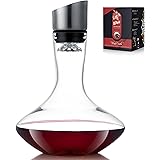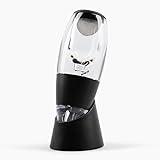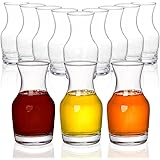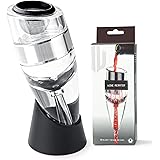A winemaking starter kit provides all essential tools. It enables beginners to embark on home winemaking. The video above visually outlines these key components. Understanding each item’s purpose is crucial. This guide elaborates on the contents of such a kit. It also explains their function within the winemaking process. Consequently, a clearer path to successful fermentation is established. This article expands upon the visual demonstration.
Understanding Your Winemaking Starter Kit
Embarking on the winemaking journey begins with the right equipment. A comprehensive winemaking starter kit is designed for this exact purpose. It includes every fundamental item needed. Imagine if you tried to bake a cake without measuring cups. This kit prevents such oversights. It ensures a smooth start to your new hobby. Furthermore, it demystifies the initial setup process. Investing in a quality kit is a wise first step. Consequently, future frustration can be avoided easily.
The allure of crafting your own wine is significant. People are drawn to the creative process. They also appreciate the satisfaction of producing a unique beverage. Therefore, many individuals explore home winemaking. A starter kit provides the necessary entry point. It contains more than just bottles and corks. Essential tools for fermentation, sanitation, and monitoring are present. Consequently, a complete winemaking experience is supported from the outset.
Key Fermentation Vessels for Home Winemaking
Fermentation is the heart of winemaking. Specific vessels are required for this crucial stage. Typically, a winemaking starter kit includes primary fermenters. These are often large food-grade plastic buckets. They accommodate the initial vigorous fermentation. Imagine if a rapidly boiling pot lacked sufficient head space. This bucket provides that necessary room. A lid with a hole for an airlock is also included. Therefore, gases are released safely.
Following primary fermentation, secondary vessels are utilized. These are commonly known as carboys. They can be made of glass or heavy-duty plastic. Carboys are used for the slower, quieter fermentation phase. Wine is transferred from the primary fermenter to the carboy. This process is called racking. It separates the wine from spent yeast. Consequently, clearer wine is produced. These vessels are fundamental to the kit’s utility.
Essential Tools for Monitoring Wine Progress
Precision is vital in winemaking. Therefore, monitoring tools are indispensable. A hydrometer is included in almost every winemaking starter kit. This device measures specific gravity. Specific gravity indicates the sugar content of the must. Imagine if a doctor prescribed medicine without knowing the patient’s condition. The hydrometer provides crucial data. It allows for calculating the potential alcohol content. Consequently, informed decisions about fermentation progress are made.
A test jar usually accompanies the hydrometer. This narrow cylinder holds the wine sample. The hydrometer is floated within it. Therefore, accurate readings are obtained easily. A thermometer may also be present. Temperature control is significant for yeast health. Optimal fermentation temperatures are maintained. Consequently, a healthy and complete fermentation is ensured. These instruments are critical for quality control.
The Critical Role of Sanitation in Winemaking
Sanitation cannot be overstated. It is arguably the most important step. A winemaking starter kit invariably contains sanitizing agents. These substances eliminate unwanted microbes. Bacteria and wild yeasts are prevented from contaminating the wine. Imagine if surgical instruments were not sterilized. The results could be disastrous. Similarly, poor sanitation ruins a batch of wine. Consequently, every piece of equipment must be meticulously cleaned.
Various sanitizers are available. Some are no-rinse solutions. Others require rinsing with clean water. Instructions for their use must be followed precisely. Proper cleaning prevents off-flavors. It also prevents potential spoilage. Therefore, a clean environment fosters a healthy fermentation. This focus on hygiene guarantees a successful outcome. Thus, sanitation tools are a cornerstone of any winemaking starter kit.
Managing Air: Airlocks and Bungs Explained
Airlocks are simple yet ingenious devices. They are crucial components of a winemaking starter kit. An airlock allows carbon dioxide to escape. This gas is a byproduct of fermentation. Imagine if pressure built up inside a sealed container. It could potentially explode. The airlock prevents this dangerous situation. Simultaneously, it prevents outside air from entering the fermenter. Consequently, oxidation is avoided.
Oxygen is detrimental to wine during fermentation. It can cause spoilage. It also leads to off-flavors. Airlocks are typically made of plastic. They are filled with a small amount of water or sanitizing solution. This forms a barrier against oxygen. Bungs, or stoppers, are used in conjunction with airlocks. They create an airtight seal in the fermenter’s opening. Therefore, the delicate winemaking process is protected adequately.
Efficient Wine Transfer: Siphoning Tools
Transferring wine requires special tools. A siphon hose is always included in a winemaking starter kit. It facilitates moving wine between vessels. This process is known as racking. Racking separates the wine from sediment. This sediment, or lees, consists of dead yeast cells. Imagine if old tea leaves were left in your cup indefinitely. The taste would be affected negatively. Siphoning ensures a clean transfer. Consequently, clarity and flavor are preserved.
Many kits include an auto-siphon. This device simplifies the starting of the siphon. It eliminates the need for mouth siphoning. Therefore, contamination risks are reduced. A racking cane is often attached to the siphon hose. This rigid tube is inserted into the wine. It helps position the siphon accurately. Consequently, sediment disturbance is minimized. These tools are indispensable for gentle handling of your wine.
Bottling Your Creation: Finishing Equipment
The final stage involves bottling your finished wine. Specific tools are needed for this operation. A bottling wand is frequently found in a winemaking starter kit. This device attaches to the siphon hose. It fills bottles from the bottom up. Imagine if a glass was filled from the top with fizzy soda. Excessive foam would be created. The bottling wand prevents oxidation and foaming. Therefore, a clean and efficient fill is achieved.
Corkers are also essential for sealing bottles. Hand corkers are common in starter kits. They compress corks into bottle necks. This creates an airtight seal. Therefore, the wine is protected from oxygen. Bottle brushes help clean bottles thoroughly. Bottle drying racks ensure proper drying. Consequently, your hard work is safely preserved for future enjoyment. The winemaking starter kit provides all these necessary components.







